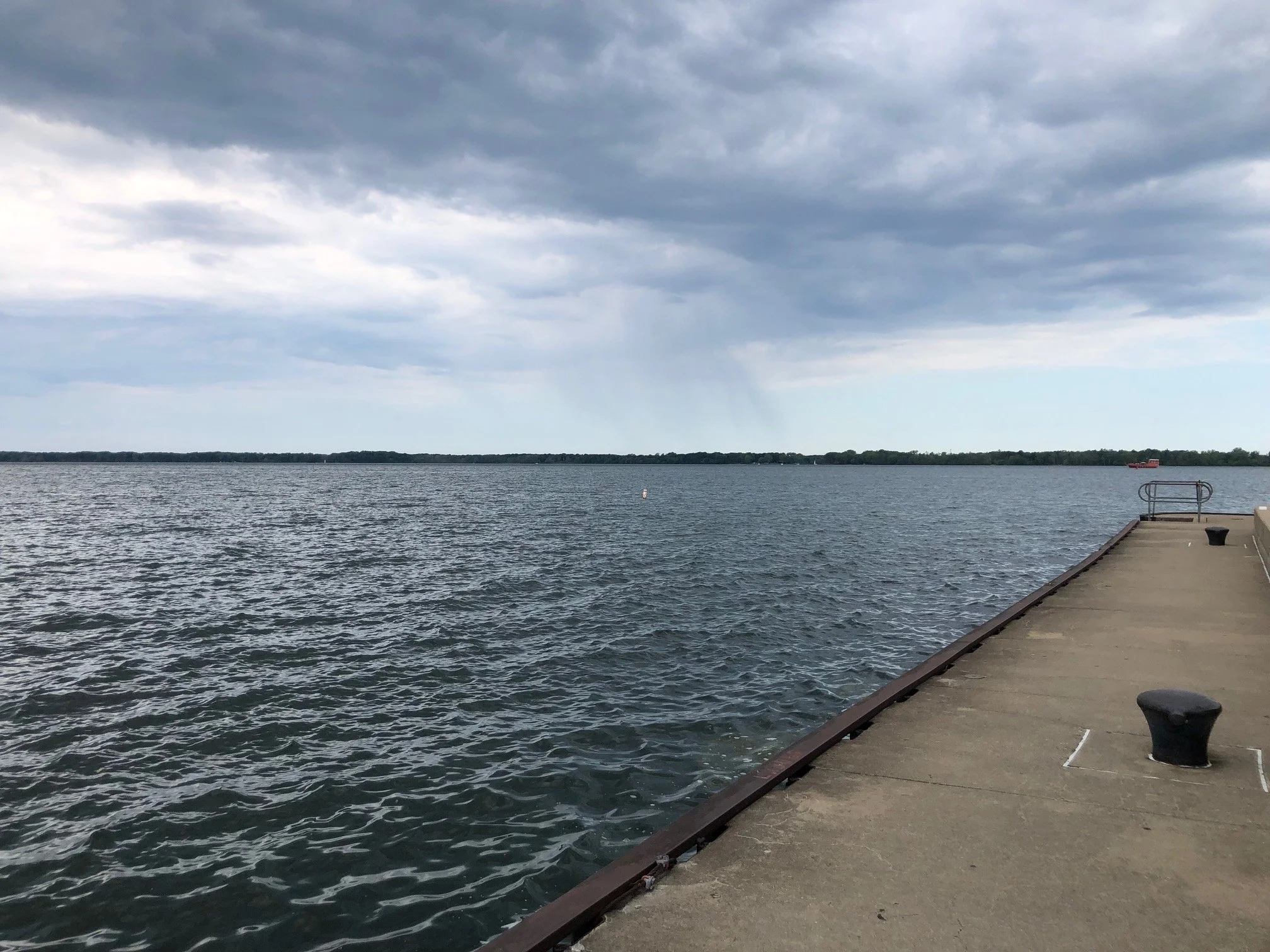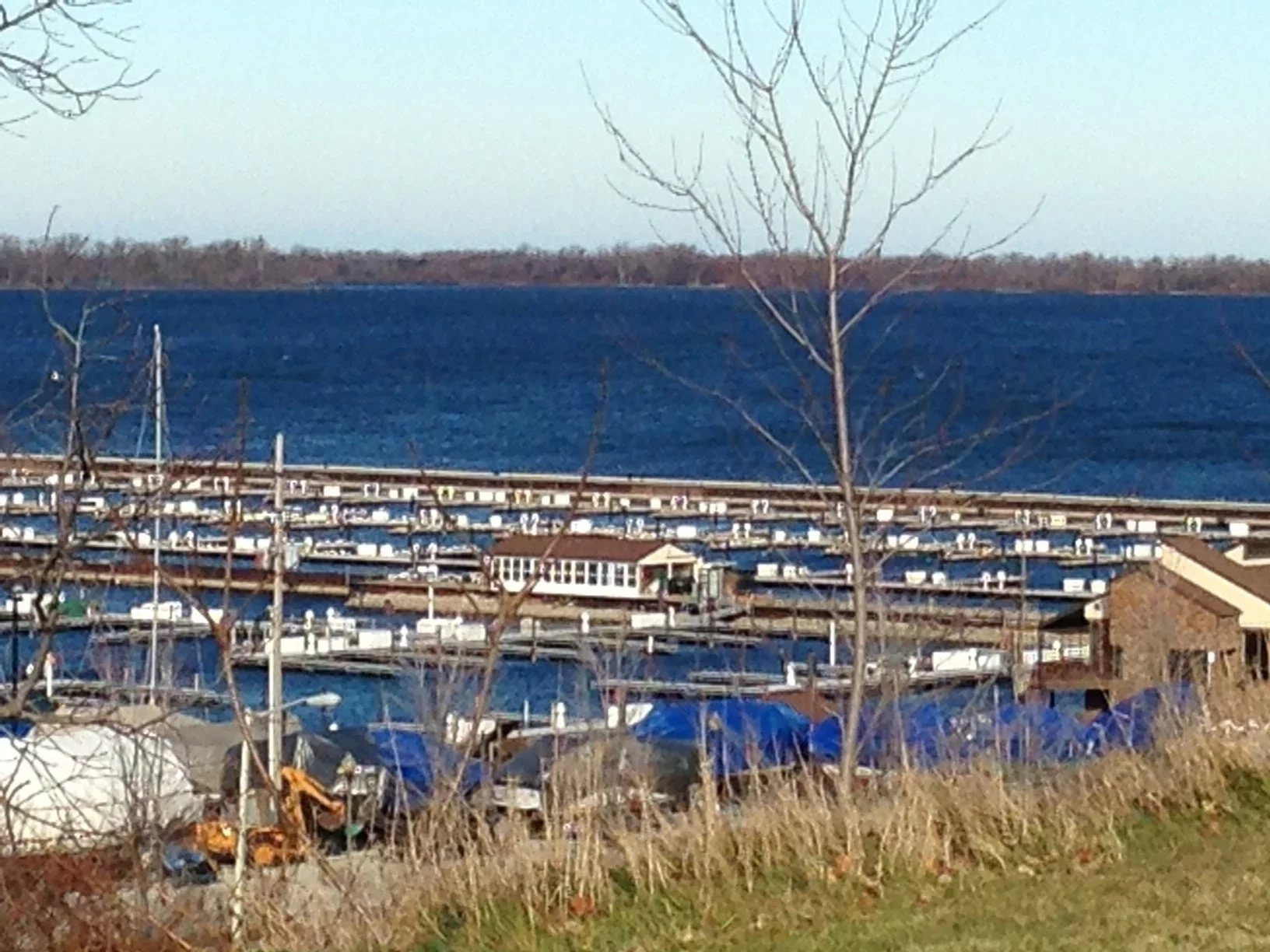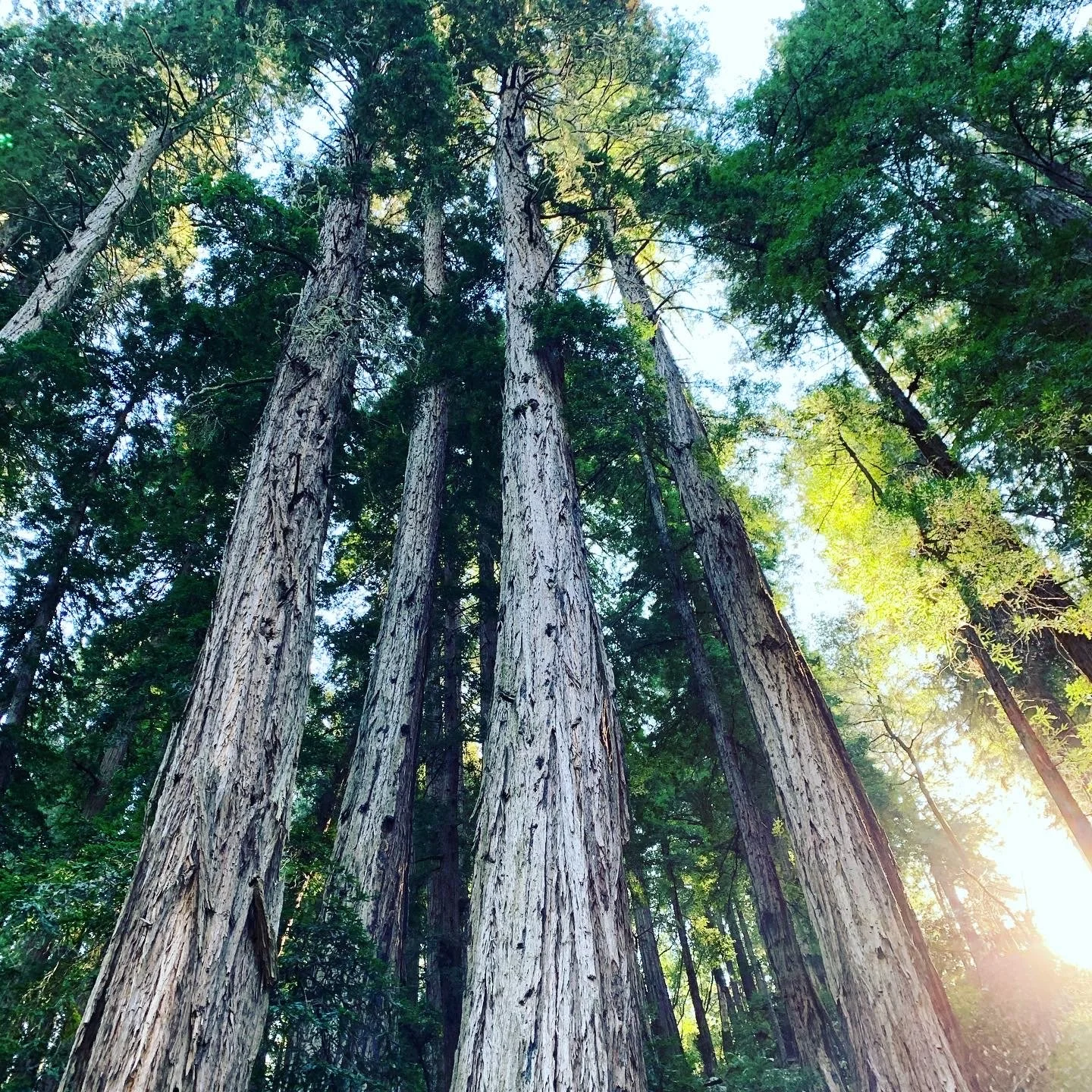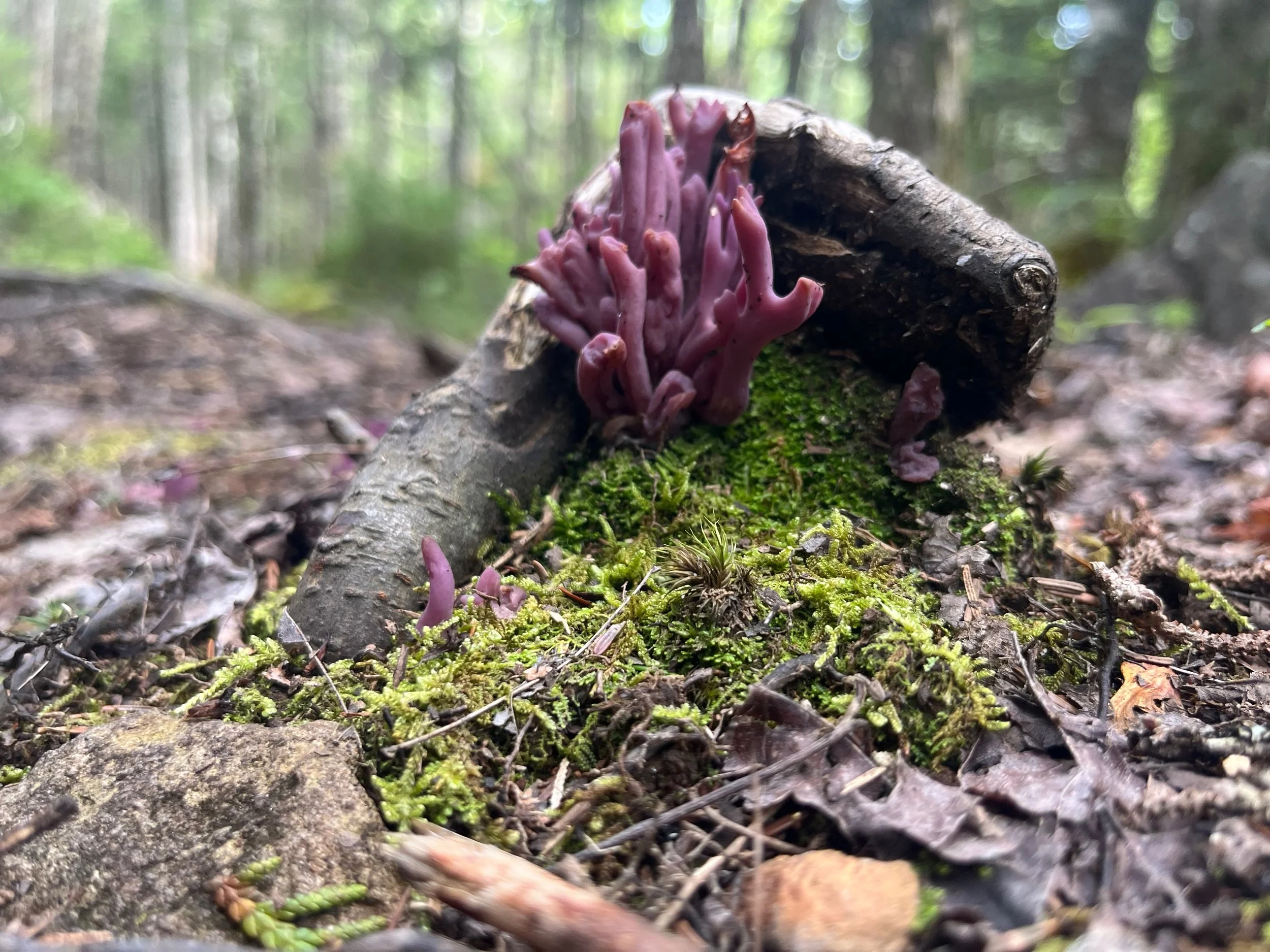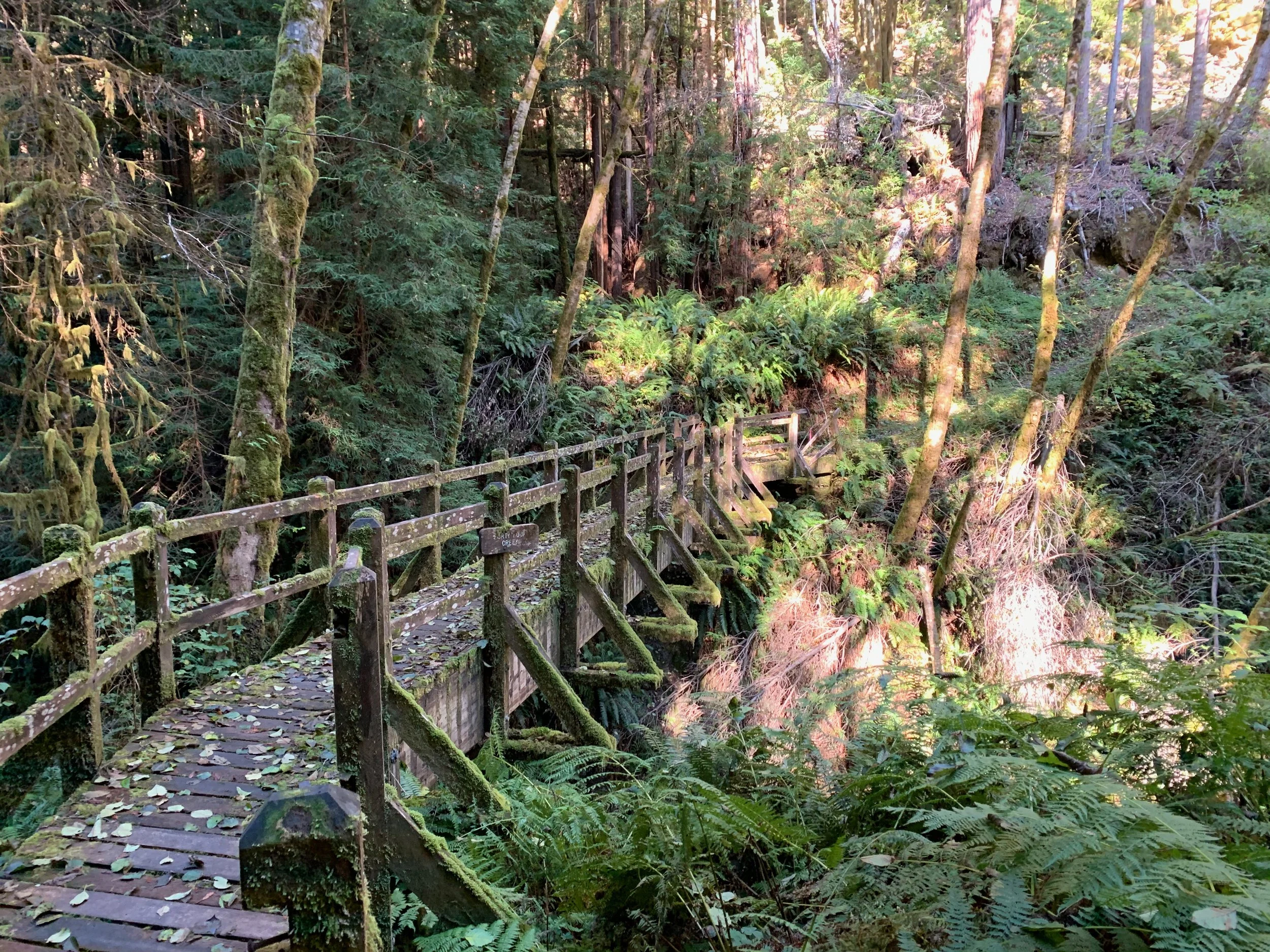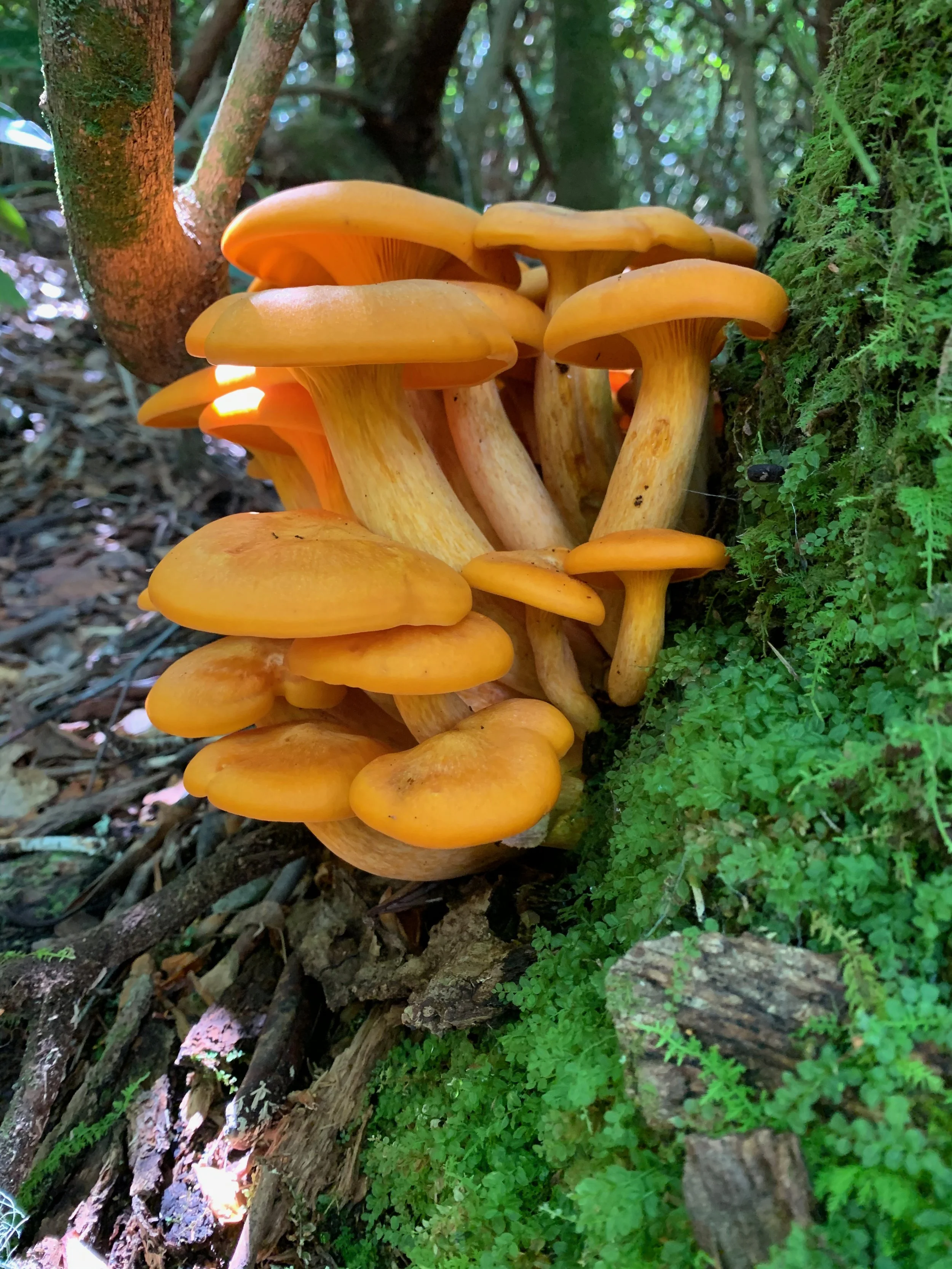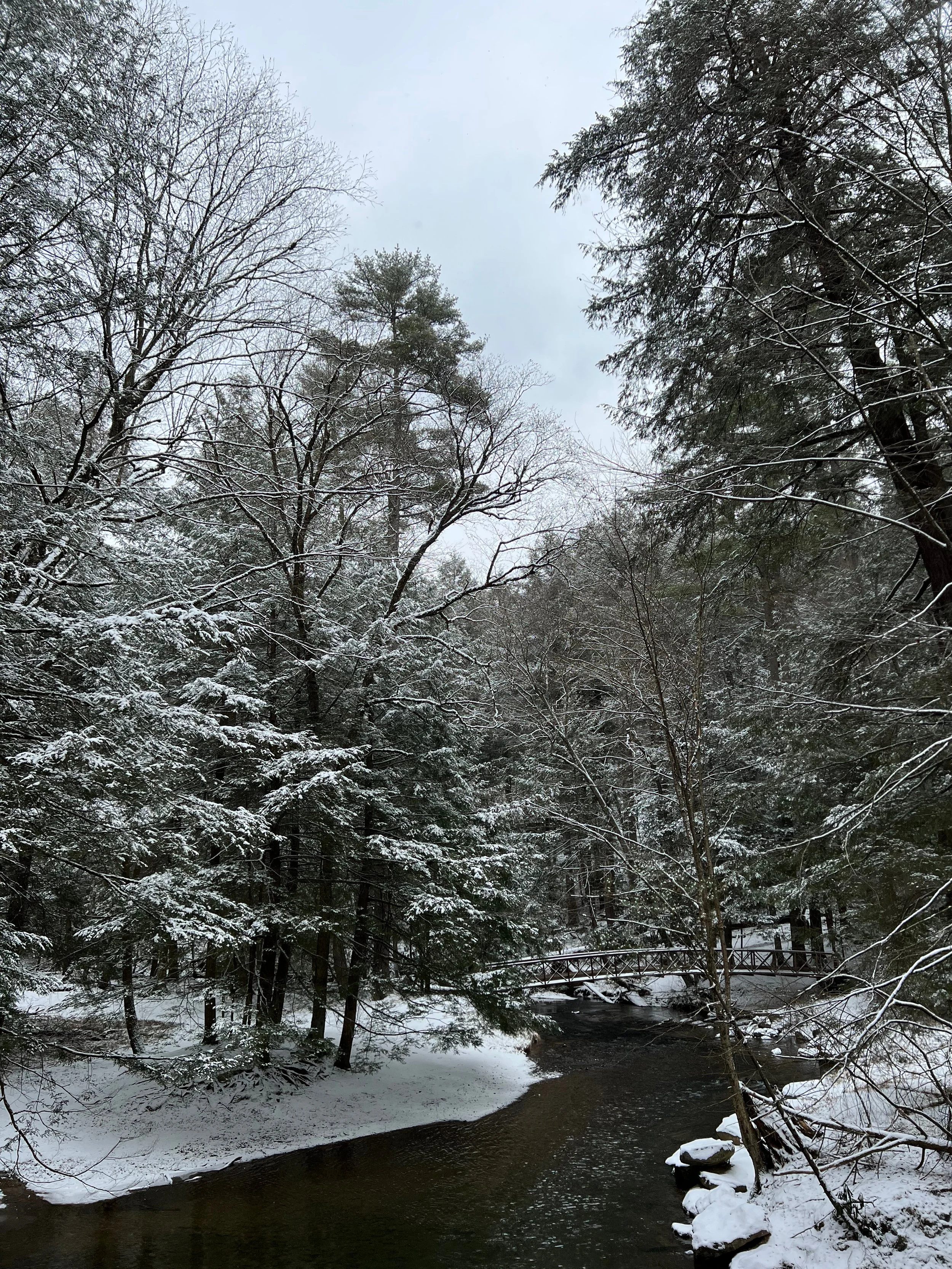Know and Love the Land and those who Inhabit it with us
I used to walk daily along the shore of Presque Isle Bay. As the seasons changed, I walked, ran, fished, cut willows to weave, tried planting trees. I saw underwater clouds of gizzard shad, as well as bowfin, steelhead, mink, beavers, various herons, warblers and all manner of waterfowl. I found old steel rails and bits of industrial detritus. I talked to folks on piers, like Dobbin’s Landing.
by Evan G. Clendenin
A gracious moment of wonder opens new, appreciative awareness of the interconnected life of which you are part. It leads you on a path of knowing and loving the land and those who inhabit it with us.
I used to walk daily along the shore of Presque Isle Bay. As the seasons changed, I walked, ran, fished, cut willows to weave, tried planting trees. I saw underwater clouds of gizzard shad, as well as bowfin, steelhead, mink, beavers, various herons, warblers and all manner of waterfowl. I found old steel rails and bits of industrial detritus. I talked to folks on piers, like Dobbin’s Landing.
I got to know a fisherman, whom I also knew from loitering at the cathedral food pantry. Over many weeks of longer conversations over foam cups of coffee, he shared that he had once been a timber-cutter, but a heart condition left him unable to work. Now he fished, something to do. I would see him many days at Dobbin’s landing or along the way, carrying bucket and fishing pole. He often had a trustworthy report about how the yellow perch were biting. He gave the fish away to friends who enjoyed eating them.
The theologian Michael Green wrote about the spiritual attitude and practice of discernment as one characterized by growth and maturation in knowledge born of love. We grow in the capacity to love in deed as we come to grasp more truly the everyday ways, needs, tendencies, the true being of those we know as spouses, friends, children, neighbors, co-workers in our lives. Green sees this personal quality of loving knowledge in our human relationships as mutually reflective of our relationship with God.
This personal quality of knowing and loving also shapes how we relate to the land and those creatures who live there. Our attention and efforts become a path of prayer that betters and beautifies creation. Separated from such an integrating path of loving knowledge, data about ecological and social harm just piles up, overwhelming our faculties to inwardly digest it. Life-hacks and more data won’t save us. An imbalanced education into the ‘awareness of living in a world of wounds’ overwhelms many of us today with a sense of grief. We might balance this out with a present-minded sense of delight, and gratitude for others, ourselves, the many creatures of earth, and living on earth. And most of us are just trying to get by, put food on the table, and still yearning for a vine and fig tree or a little patch of green to enjoy.
One day I was walking by a grassed hillside above the lakeshore, slated to be turned into a giant billboard. I stopped to talk to some women who turned out to be gathering wild garlic. They shared that they had come to Erie more recently from another part of the world. As I bid them goodbye, they handed me a bag of garlic. I’ve noticed people who see a green patch or fruiting trees in the midst of urban/suburban america, and see something they know and love. And they try to make good use of it.
You might simply inquire about the land you know and love. And you might respectfully inquire about those who share it with you. In what ways do they know it and love it? The quality of knowledge born of love, and the love that emerges with truer knowledge of the land and those who inhabit it, confers a quality of humility, that is, a grounded knowing open to see how another might see. They enrich what you see and know, and this encounter will enrich your heart’s capacity for loving effort. You may become part of a new conversation, or discover yourself part of a much longer and broader one, about what it means to live well in a place, and to tend it in righteousness and peace. This knowledge will change you, and your efforts.
Gratitude and the Web of Interconnection
Gratitude and the interconnection of everything.
Caption: Violet coral, a species of Clavarioid fungi, pokes through some moss from underneath a tree root in north central Pennsylvania.
By John Creasy
The second theme of our Wild Indigo Guild’s program is “gratitude and interconnection.” During 2024 we will be teaching in local churches through eight “Themes for Exploration and Discovery” to help these congregations connect with God and each other through the natural world. We’ll work through a process that will help churches see action for ecology, climate and local issues of justice as issues of immense importance and calling from God. That second theme is one that I’ll reflect on here.
Caption: One of my favorite places to experience mystery and interconnection is in the redwood forests of coastal California. Muir Woods just outside San Fransisco is one of the most accessible places to see huge old-growth redwoods in an intact coastal redwood ecosystem.
Science, theology, spirituality, the Bible and just about every world religion teach that there are strands of interconnection beyond our understanding. What do I mean by this idea of interconnection? The bible calls God “all in all” and the “I Am” leading us to ponder God as the one who is in all, with all, and the source from which every atom of the universe has found its being. For some philosophers God is the interconnection that unites all that is. In science our understanding of interconnectedness continues to deepen and become more and more complex. Biologists once studied individual species but today see that no living creatures exist outside of an ecosystem, a complicated web of interconnection. Some ecosystems are microscopic, like the ecosystem of living creatures in a teaspoon of soil or on the surface of your skin!
In recent years forestry experts have begun to understand what indigenous peoples have known for millennia, all the forest is interconnected and one element cannot be removed without losing many strands of mutual support between species. For instance, Suzanne Simard, a professor in British Columbia, has worked for decades to demonstrate how trees are connected to fungi in the soil which allows them to pass messages and resources to neighboring trees. Her work is some of the first to scientifically document that one tree will share carbon, through fungal mycelium, when another tree is lacking! Peter Wohlleben has demonstrated the same interconnectedness in the forests of Germany. His work tells of ancient tree stumps being supported and kept alive by the underground fungal network and subsequent connection to healthy trees of the forest. Carbon and nutrients are passed from photosynthesizing trees to the ancient stumps, keeping their roots and living tissue alive for years after the tree was cut down,
Caption: John in the redwoods of coastal California
The web of interconnection in ecosystems is complex beyond our understanding. There are millions of types of fungi, all of them with different relationships of mutuality with different plants and animals, supporting life. As people of faith we believe in a God who’s image is reflected in the goodness and complexity of creation. We humbly recognize that all things are connected and humbly admit that we cannot understand the complex webs of interconnection that make life on earth so rich and abundant. This recognition almost always leads me to a sense of awe, wonder and gratitude. As I look out my window on this cold December morning I see my garden here in the city of Pittsburgh. I see the dried up plants that fed us and continue to feed even in the winter thanks to our canning efforts this summer. The soil, worm bin, compost piles, ground cover plants and so much more across our small yard remind me that these elements are connected and creating a healthy and productive ecosystem. Even my yard is more complex than I can understand, and I designed it! This leads me to gratitude for the gifts of our garden this past year. The simiplicity of our urban permaculture garden is a starting place for me to sense and experience the truth of interconnection, that all of Creation is “very good” and created to be in right relationship with all of its individual members. And we can’t leave out the interconnection of our city, the people and networks, some healthy and some broken, all in need of restoration.
What might you do this week to reflect on the beautiful interconnectedness of all that is? How might you use some time in nature to conjure up a sense of gratitude for God’s provisions for us through the complex beauty of the natural world?
Creation Advent Devotional
By Franklin Tanner Capps, Director of Summer Youth Institute at Pittsburgh Theological Seminary. Tanner has also been an instrumental partner in helping launch Wild Indigo in to the world.
Scripture
PSALM 150
1 Praise the Lord!
Praise God in his sanctuary;
praise him in his mighty firmament!
2 Praise him for his mighty deeds;
praise him according to his surpassing greatness!
3 Praise him with trumpet sound;
praise him with lute and harp!
4 Praise him with tambourine and dance;
praise him with strings and pipe!
5 Praise him with clanging cymbals;
praise him with loud clashing cymbals!
6 Let everything that breathes praise the Lord!
Praise the Lord!
Devotional
Many scientists are saying that a sixth mass extinction event is upon us. This conclusion has provoked skepticism and outright denial—reactions that are quite understandable, given how tough it is to face the fact that our lifestyles and collective behaviors are likely responsible for the decline of vast webs of life that may take us down with them when they finally collapse. It’s also unsettling news, because it asks us to come to terms with the fact that we’re creatures whose lives depend on the lives of others. And in a fundamental way, we’re reminded that we humans are neither the point nor the final goal of God’s creative purposes. Rather, we are invited—in our limited time and limited ways—to be worshipful participants in what God is doing across creation.
Like the news of a sixth mass extinction, Psalm 150 is displacing. Because God is not confined to the sanctuary, the psalmist calls on praise to arise in the firmament. The clap of human hands cannot be heard there, but the beating of griffon vulture wings in the skies above Ethiopia can. God will be praised with or without us. While humans have rerouted rivers and manipulated the elements, sometimes to catastrophic consequence, human hands have also fashioned bone and bark into trumpets, reed and bamboo into pipes, skin and wood into lutes and tambourines, and alloyed the basic elements of copper and tin into cymbals. For the psalmist, these instruments join a cosmic chorus that are voicing creation’s praise.
Advent is an interlude for quiet listening. During this time of waiting and anticipation, may we pay closer attention to the de-centering and displacing hums, chirps, whistles, and drumming of so many other creatures who are inviting us to live lives of joyful care while joining them in the worship of the Creator.
Prayer
Lord God, grant us a spirit of listening that would open us to our fellow creatures, so that, through them and with them, we might come to know you more deeply and praise you more fully. Amen.
Cook Forest in winter’s dress.
Wonder and Learning To See
Wonder and Learning to See
by Evan G. Clendenin
[From Astronomy for Amateurs, Internet Archive Book Images, No restrictions, via Wikimedia Commons]
I stood there with two people from church, looking out through the window at the full moon and Jupiter. While our hosts fixed dessert in the kitchen, we wonder-ed together at the night sky. They described how looking up at night, or beholding images of far off celestial objects, awakened in them a sense of wonder, of humility, of gratitude, and of faith.
When have you found yourself in wonder at some aspect of the earth and cosmos, the creation?
So we begin some reflections upon the first of Wild Indigo Guild’s 8 Themes of Creation-Restorative Spirituality, Wonder and Learning to See.
Your sense of wonder at the creation opens a window into ‘seeing’ with God and others.
(I use the word ‘see’ with care, meaning more than the physical sense of sight, out of recognition for those who traverse the world physically blind or with ‘low-vision.’)
We grow in ‘seeing,’ in knowing with love and more-whole hearts, with ‘the eyes of our hearts enlightened.’ As you look and encounter the creation in wonder, the restorative work of divine love grows in you and thru you.
What else happens in wonder?
Wonder draws your whole being into the act of ‘seeing’. We might call it awe, reverence, even ‘fear of the lord’, which is the beginning of wisdom. Wonder heralds a response of your whole person. You stand at reverential distance, yet know yourself drawn near.
Consider what happens when you encounter such things as…
The beauty of the planets and stars in the night sky.
A forest of trees, glorious in the sunrise.
The song of tiny frogs emerging in vernal pools where history and bulldozers spared a wild swath.
The mystery of bread and wine.
A black bear encountered in the berry patch, or along the trail.
[Long, William J. (William Joseph), 1867-1952, No restrictions, via Wikimedia Commons]
Wonder ‘slows you down enough to see’, and even flat-out stops you. You now see.
Wonder opens up interior space for awareness. You have room inside to notice things, elements, interconnections out on the land, not to mention people and their ways.
As the folks at supper described with regard to the starry heavens, wonder gives a both grounded sense of self, and a larger sense life. Wonder may awaken other inner capacities, like approriate curiosity, understanding, compassion, or integrity. These all help you grow more appreciative, attentive and caring with the creation, of which you are a member.
And wonder opens us to more heart-ful and hopeful awareness of God’s restorative work in the land. It can open our vision to where we and others hope to live, even beyond the ecological damages of which we can be unaware, or all too well aware.
In the story of Noah and the ark, as the flood subsides, Noah looks out the window and sends the raven and the dove to search for land, in hope of a place to live. Noah trusted these birds to be his eyes.
Wonder can be a window God makes within you to see. God restores in you the heart to look more with wonder. Wondering with other people, animals, and the Divine help you to see and participate in the fuller realities of the land around you. Your heart can fill with what is good and very good.
What do you ‘see,’ notice, encounter with wonder where you are?
What is God renewing in you with wonder?

